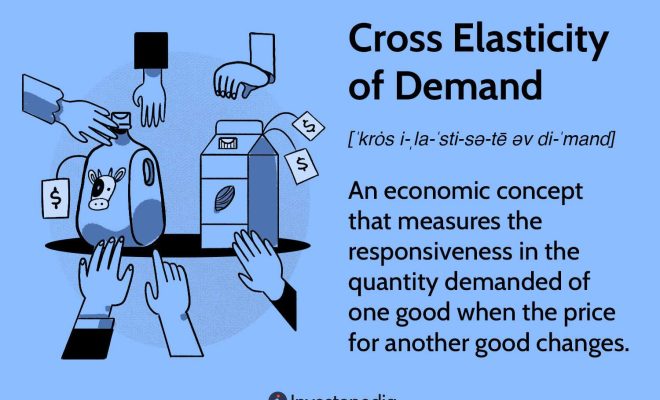How to calculate quantity demand

Understanding the fundamental concepts of economics is vital for any business or individual aiming to make informed decisions in today’s ever-changing market. One of these key concepts is the quantity demanded, which refers to the amount of a product that consumers are willing and able to purchase at a particular price. In this article, we will explore the process of calculating quantity demand, uncovering the importance and relevance of this crucial economic principle.
1. Understanding Demand:
Before we delve into calculating quantity demand, it is vital to first understand the basic principles of demand and how they relate to consumer behavior. The law of demand is a fundamental economic theory which states that as the price of a good increases, its demand will decrease and vice versa.
This relationship can be displayed in two ways:
– On a demand schedule: This is a table summarizing different quantities demanded at various prices.
– On a demand curve: A graphical representation illustrating price on one axis and quantity demanded on the other axis.
2. Calculating Quantity Demanded:
The process of calculating quantity demanded requires knowledge of a product’s demand function, which is an equation representing the relationship between price and quantity demanded. The formula for quantity demanded (QD) can be expressed as follows:
QD = f(P)
Here, QD denotes the quantity demanded, P represents the price, and f(P) denotes the function describing how QD varies with P. Since demand generally decreases with increasing prices for most goods, f(P) is typically an inverse function.
3. Linear Demand Functions:
One straightforward way to express a demand function is as a linear equation. Linear funcions are relatively simple to work with and can accurately represent simple market scenarios.
Example:
QD = 100 – 5P
Where QD stands for quantity demanded and P represents price.
To find the specific quantity demanded at a given price, simply substitute P with the corresponding price:
If P = 10
QD = 100 – 5(10) = 50
In this example, at a price of $10, the quantity demanded equals 50 units.
4. Elasticity of Demand:
Elasticity measures the responsiveness of quantity demanded to changes in price. By understanding a product’s price elasticity of demand, businesses can better determine how changes in prices will impact consumer behavior.
The elasticity formula is as follows:
Price Elasticity of Demand (PED) = (% Change in Quantity Demanded) / (% Change in Price)
A PED value greater than one indicates that demand is elastic, meaning that a change in price results in a greater percentage change in quantity demanded. Conversely, a PED value less than one indicates that demand is inelastic, meaning that the resulting percentage change in quantity demanded is lower than the percentage change in price.
5. Shifting Market Conditions:
It is essential to remember that market conditions and other factors constantly influence quantity demanded. Therefore, it is necessary to reevaluate demand functions regularly and adjust strategies accordingly to ensure optimal pricing and marketing choices.
Conclusion:
Understanding and calculating quantity demanded is crucial for anyone looking to navigate today’s complex market landscape. By keeping an eye on demand, businesses can anticipate consumer behavior changes and make informed decisions before adjusting prices or modifying their product offerings. Armed with this knowledge, you are now ready to tackle the fascinating task of analyzing market patterns and predicting future trends.






